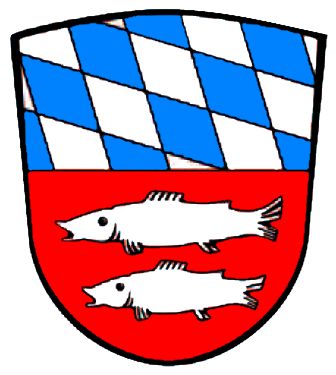Bayerisch Gmain: Difference between revisions
Knorrepoes (talk | contribs) m (Text replacement - "{{media}} Literature : " to "Literature : {{media}} ") |
Knorrepoes (talk | contribs) m (Text replacement - "Literature :" to "'''Literature''':") |
||
| Line 31: | Line 31: | ||
|} | |} | ||
[[Civic Heraldry Literature - Germany|Literature]] : | [[Civic Heraldry Literature - Germany|'''Literature''']]: | ||
{{media}} | {{media}} | ||
Revision as of 07:49, 9 September 2022
This page is part of the German heraldry portal Deutsche Wappensammlung |
Heraldry of the World |
|
German heraldry:
|
Selected collector's items from Germany:
|
BAYERISCH GMAIN
State : Bayern
District (Kreis) : Berchtesgadener Land (until 1974 Berchtesgaden)
| German |
Geteilt; oben gerautet von Silber und Blau, unten in Rot übereinander zwei waagrechte silberne Fische. |
| English | Gmain No blazon/translation known. Please click here to send your (heraldic !) blazon or translation |
Origin/meaning
The arms were officially granted on September 16, 1963.
The upper half shows the diamonds of Bayern and refers to the fact that the area historically belongs to Bayern. The municipality has always been on the border between Bayern and Salzburg (now Austria).
The two fish are taken from the arm of the St. Zeno abbey in Bad Reichenhall, as most of the area as well as the parish historically belonged to the abbey.
| The arms near the town (2013) |
The arms on the town hall (2013) |
Contact and Support
Partners:
Your logo here ?
Contact us
© since 1995, Heraldry of the World, Ralf Hartemink 
Index of the site














